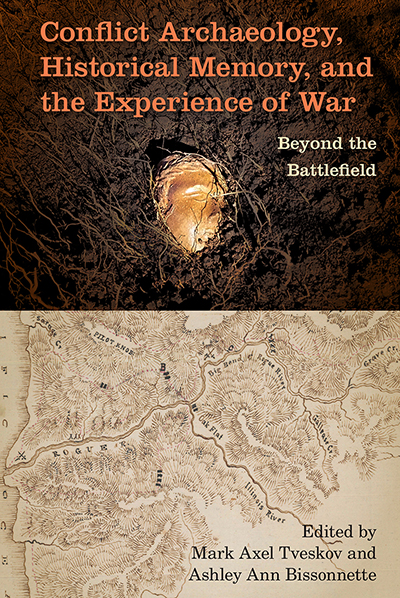- Apply
- Visit
- Request Info
- Give
New book takes an inclusive look at war
Written by by Lucinda Weiss
Published on February 01, 2023
Re-examining old battlefields through a new lens is the subject of a recently published book, “Conflict Archaeology, Historical Memory, and the Experience of War,” co-edited by Ashley Ann Bissonnette, assistant professor of public health at Eastern Connecticut State University.
The book’s essays cover battlefields from the 1895-96 King Philip’s War in New England to World War II. They examine not just the artifacts of battlefields but include historical memory, the social experience of war, and how indigenous and under-represented groups remember and commemorate the battles.
 Prevailing historical narratives have often minimized the complexity of conflicts, according to the publisher, the University Press of Florida, and “smoothed over the contradictions and genocidal violence of colonialism and erased the diversity of the participants.”
Prevailing historical narratives have often minimized the complexity of conflicts, according to the publisher, the University Press of Florida, and “smoothed over the contradictions and genocidal violence of colonialism and erased the diversity of the participants.”
The book challenges established narratives with new research that includes the stories of local communities and descendants and how they view the trauma of battle.
Bissonnette’s chapter in the book, co-written with Kevin McBride, associate professor of anthropology at the University of Connecticut and former research director of the Pequot Museum, re-examines the Battle of Great Falls/Wissatinnewag-Peskeompskut in May 1676, when a militia of English settlers assaulted a Native village in what is now Turners Falls, MA. It is considered the decisive battle of King Philip’s War between Natives and colonial New England settlers.
After initial success in the surprise attack, the English militia was routed and its leader, Capt. William Turner, was killed. But the battle ended negotiations between the settlers and the Native tribes across New England. Months later, Metacom, the sachem named “King Philip” by the English, was killed. Native tribal alliances fell apart, and the war ended Native resistance to colonial settlement in the middle Connecticut River Valley. Thousands of Native men, women and children were casualties or were sold into slavery.
Bissonnette and McBride have led an ongoing National Park Service study of the battle under the American Battlefield Protection Program. Besides archaeological surveys of the terrain and uncovering artifacts of the battle, which Bissonette noted is still possible after 350 years, the goal is to research the Native and English communities that were involved and place the battle in a broader historical and cultural context.
Many of the chapters in Bissonnette’s new book similarly re-examine battles and “describe how it is at times of war and conflict that social constructs such as race and gender become most accentuated,” as Bissonnette says in the introduction with co-editor Mark Axel Tveskov, professor of anthropology at Southern Oregon University.
“How do we best preserve and learn from painful historical memories while overcoming historical trauma?” the editors ask. “Why do some historical memories remain potent, while others are forgotten, revised or erased?” they add.
The Great Falls battle is long past, Bissonnette said, “but it still has a mark on the community.” By re-gathering data about the battle and its impact on the indigenous community, whose views may have been left out of its history, the community can be educated about the meaning of the event beyond the battlefield, she said.


